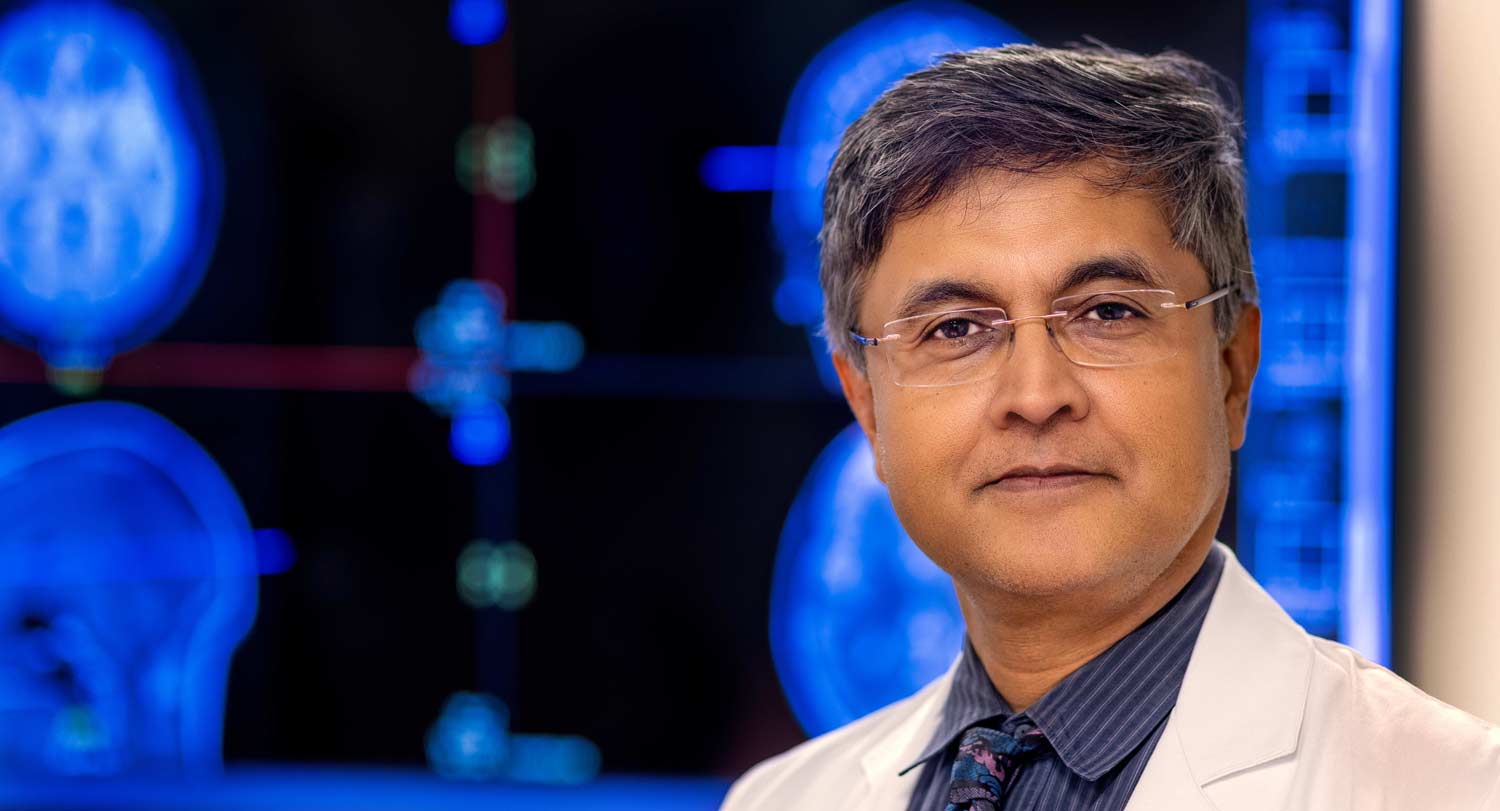
Sometimes called the buckle of the nation’s Stroke Belt, the state of South Carolina is, by one measure at least, at a decided disadvantage in dealing with the threat of stroke, the most common form of neurological disorder in the state.
The Palmetto State has only two to three neurologists per 100,000 residents, a far cry from the seven or eight that is considered the average number needed for that many people. While there are efforts in place to increase those numbers, the University of South Carolina’s School of Medicine in Columbia already has taken major steps to provide better comprehensive stroke care across the state.
“We are part of what’s called Stroke Net, a clinical trial network established by the National Institutes of Health to improve stroke outcomes,” says Souvik Sen, chair of the neurology department in USC’s School of Medicine Columbia. “We’re engaged in three types of clinical trials: treatment of stroke patients when they come to the emergency room, what we do to prevent them from having another stroke and how to make them better after a stroke.”
"It almost gives you goosebumps when you see someone come in paralyzed and then walk out of the hospital a day or two later, which at least a third of our stroke patients do."
Sen joined USC’s medical faculty in 2010 and soon after launched a comprehensive stroke center in conjunction with Prisma Health, the medical school’s hospital partner and one of the leading health care providers in South Carolina. Since then, Sen has helped lead the charge in adopting new protocols in the ever-evolving approach to stroke treatment.
“Practically every year or two, stroke treatments are being modified leading to better outcomes. And that’s why we have to be up to speed with our research here through clinical trials — that's what builds the evidence for improved stroke care,” Sen says.
“As important as the research is, it is the patient care that personally motivates me. It does require a lot of work from every member of our team because strokes happen 24/7. But seeing the impact of the treatment — it almost gives you goosebumps when you see someone come in paralyzed and then walk out of the hospital a day or two later, which at least a third of our stroke patients do.
“In the past when there was very limited treatment available, you knew this person would either be in a nursing home disabled for the rest of their life and high rate of mortality.”
To address the need for neurological expertise in rural areas of the state, Sen and other neurology faculty members who also are clinicians at Prisma Health in Midlands have begun a research model called teleproctoring. The model is currently in use in Sumter, S.C., where advanced practitioners such as physician’s assistants or nurse practitioners see neurological patients while consulting virtually with USC’s neurology clinicians in Columbia who provide expert counsel. Sen says the program is working well and could become a model for rural areas with poor access to medical care that struggle to attract neurologists.
In addition to the stroke expertise that Sen and his colleagues bring to the table, the university has an array of assets that bolster stroke treatment in the state, including the McCausland Brain Imaging Center and an interdisciplinary Aphasia Lab in the Arnold School of Public Health that boasts a team of scientists whose research on aphasia — a major consequence of stroke — is supported by external grants.
Finally, a neurology training program at the School of Medicine Columbia is attracting six residents every year who embark on a four-year training program to become neurologists.
The school currently has a cohort of 24 residents each in training to become neurologists.
“The advantage of that is that when these people go through medical school here and train here, they're very likely to stay back and serve their community here,” Sen says.